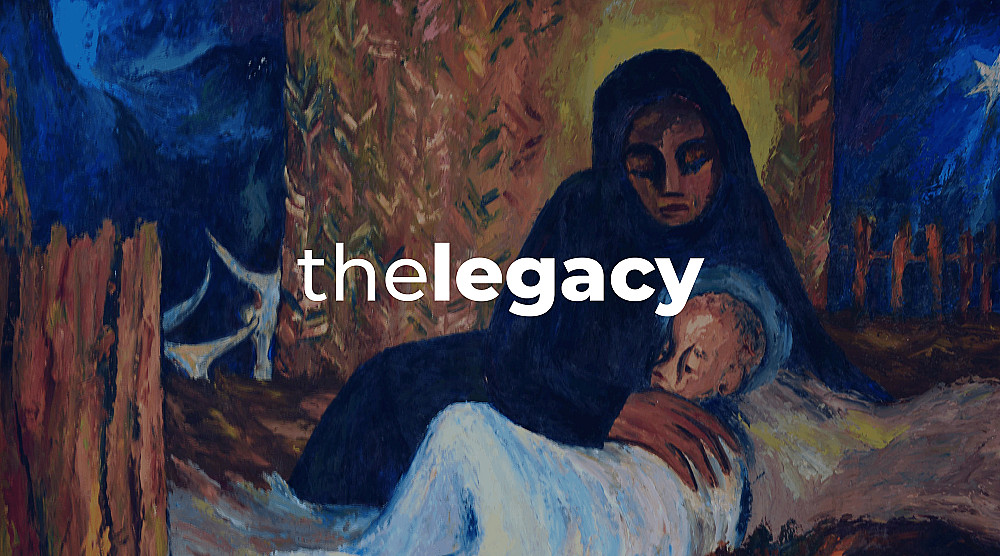Uche Okeke’s Toolkit: Crafting a New Legacy for African Modernism

Published 14 August 2025 in The Legacy
Uche Okeke Legacy Editorial
In the mid-twentieth century, a quiet revolution unfolded within the walls of the Nigerian College of Arts, Science and Technology in Zaria (now Ahmadu Bello University). At the centre of this transformative moment was Uche Okeke, a visionary artist and educator whose contributions would go on to define not just a new direction for African art but a foundational methodology for cultural resistance and renewal. Okeke and his peers in the Zaria Art Society were not merely reacting to colonial imposition; they were developing a method for reclaiming African visual languages and repositioning them within a global artistic conversation. This was the genesis of what Okeke called Natural Synthesis, a concept that continues to shape how African art is made, taught, and understood.
Natural Synthesis was not a stylistic suggestion or a symbolic gesture. It was a deliberate and deeply informed strategy. Rather than choosing between indigenous forms and Western modernism, Okeke proposed an approach that acknowledged the complexity of African experience under colonialism while insisting on the legitimacy of African visual and philosophical systems. He began to integrate Igbo aesthetic traditions, particularly the Uli line art used by women in body and wall painting, into his contemporary works. By doing this, he demonstrated how African forms were not static symbols of a lost past but living vocabularies capable of modern expression. Alongside fellow artists like Yusuf Grillo, Bruce Onobrakpeya, and Demas Nwoko, Okeke helped create a dynamic environment where art became a site of synthesis of memory, innovation, and resistance.
This ethos extended beyond the canvas. As head of the Fine Arts Department at the University of Nigeria, Nsukka, which later became the Nsukka Art School, Okeke embedded his ideas into teaching practices that prioritised cultural inquiry and community engagement. He believed that artists should begin with their immediate environments, not as sources of nostalgia but as starting points for research, exploration, and reinterpretation. The curriculum he developed emphasised the importance of drawing from oral traditions, everyday symbols, and local histories, shifting the axis of creative authority from European theory to African reality. This grounded approach helped dismantle the colonial hierarchy of knowledge and offered students the tools to become cultural authors in their own right.
Uche Okeke, Untitled, Ink on Paper, 10 x 11.7 inches
Okeke’s contributions were not confined to pedagogy. He was also a meticulous documentarian of artistic and cultural life, keeping detailed sketchbooks and notes that blended text with imagery and observation. These materials reflect a level of archival attentiveness that mirrors contemporary efforts in cultural stewardship. Long before the emergence of digital platforms and machine learning tools in art management, Okeke understood the importance of preserving not just objects, but the relationships and meanings embedded within them. His practice anticipated today’s shift toward what some call collection intelligence - systems that interlink data about provenance, materials, and cultural context to tell fuller, more inclusive stories about art and history.
In many ways, the challenges Okeke addressed are the same ones that cultural institutions face today. The rethinking of what constitutes an exhibition, especially in digital and hybrid forms, resonates with his belief that art must speak beyond its immediate frame. As museums and archives now explore new formats to reach global and diasporic audiences, often through immersive technology and online accessibility, they follow a path that Okeke helped illuminate. His work insisted that African art could not be treated as a static category but must be continually engaged with through questions of origin, authorship, and agency.
Moreover, the increasing attention to ethical stewardship in the art world reflects values Okeke championed decades ago. His exhibitions were acts of assertion - opportunities to reposition African art as intellectual labour and political statement. In this light, contemporary efforts to address restitution, trace provenance through digital means, and involve communities in the management of their cultural heritage carry forward his legacy. Okeke did not see art as something to be possessed; he saw it as something to be cared for, interrogated, and shared.
Uche Okeke, Ulo Mbari (Mbari Temple) Ala Earth Mother And Her People, 1966
Today, as curators, artists, and scholars navigate complex questions around representation, history, and access, the principles that guided Okeke’s work remain deeply relevant. His synthesis of tradition and experimentation, his insistence on rootedness, and his commitment to documentation all speak to the evolving role of art in shaping not only what we see but how we understand ourselves. In this sense, his so-called toolkit - composed of aesthetic knowledge, pedagogical rigour, and cultural accountability - is not simply a historical artifact. It is an active framework.
What Uche Okeke created was more than a movement. It was a system of thought and practice that continues to inform how African art, and the art of its subsequent movements such as Nigerian Modernism, is made, studied, and preserved. His contributions laid a foundation that stretches from physical studios to cloud-based archives, from local classrooms to international exhibition halls. As institutions across the continent and the diaspora work to reimagine their roles, Okeke’s legacy stands as both guide and challenge. He taught us that art is not only about beauty or form. It is about meaning, memory, and the future we choose to build.
